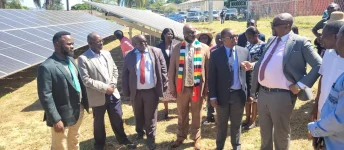The government worked with UN partners to power most health centers in Manicaland using solar energy. Nearly 192 out of 214 medical facilities now run on clean power instead of relying on unstable electricity. This project helps doctors treat patients without interruptions from power cuts.
Provincial leader Misheck Mugadza praised how renewable energy changed healthcare across the region. Victoria Chitepo Hospital uses a 140-kilowatt system for its operations. Mutambara Mission Hospital received an even larger 150-kilowatt installation. The Hwakwata Project generates 200 kilowatts that feed into the main power grid.
UNDP representative Ayodele Odusola said the program reaches far beyond Manicaland. The nationwide effort includes over 1,000 solar-equipped facilities across Zimbabwe. His organization also built 447 water wells, with 97 located in Manicaland. All these projects add up to 13.8 megawatts of renewable energy capacity.
Rural communities benefit most from these improvements as they often faced the worst service disruptions. The partnership shows how green energy can transform healthcare delivery in hard-to-reach areas.
Provincial leader Misheck Mugadza praised how renewable energy changed healthcare across the region. Victoria Chitepo Hospital uses a 140-kilowatt system for its operations. Mutambara Mission Hospital received an even larger 150-kilowatt installation. The Hwakwata Project generates 200 kilowatts that feed into the main power grid.
UNDP representative Ayodele Odusola said the program reaches far beyond Manicaland. The nationwide effort includes over 1,000 solar-equipped facilities across Zimbabwe. His organization also built 447 water wells, with 97 located in Manicaland. All these projects add up to 13.8 megawatts of renewable energy capacity.
Rural communities benefit most from these improvements as they often faced the worst service disruptions. The partnership shows how green energy can transform healthcare delivery in hard-to-reach areas.












